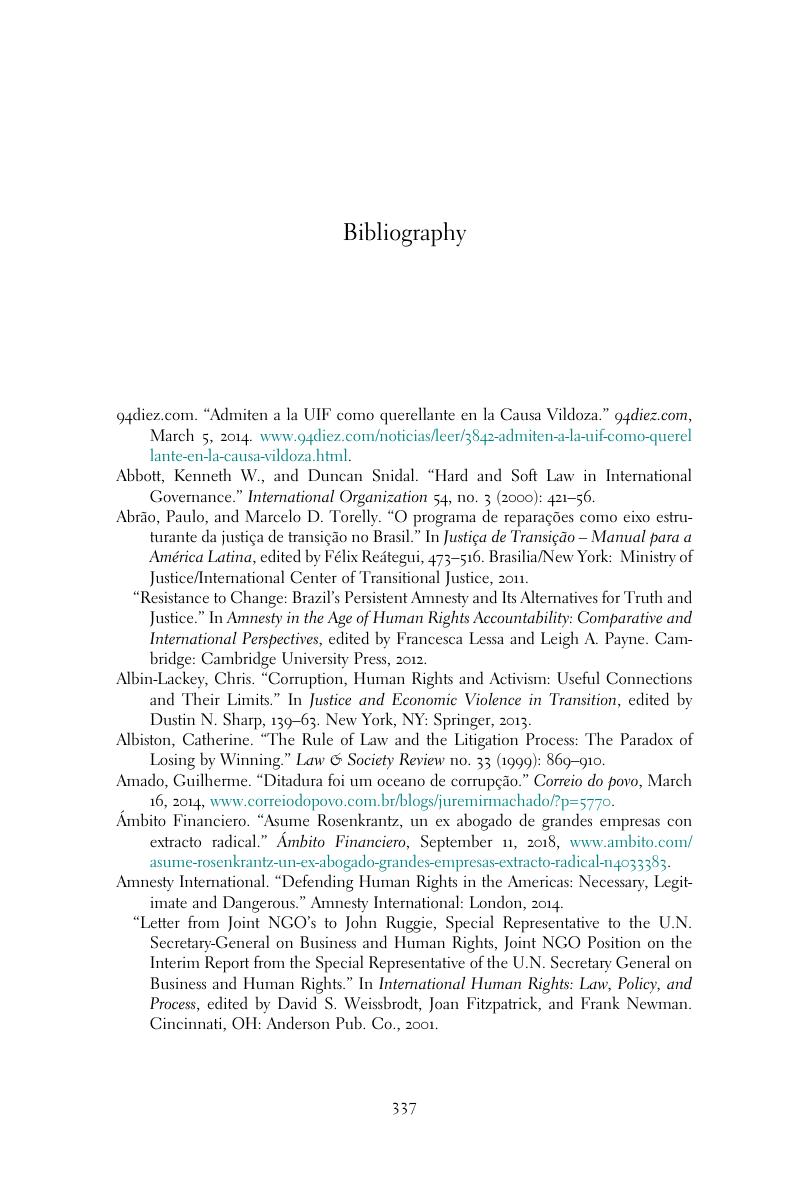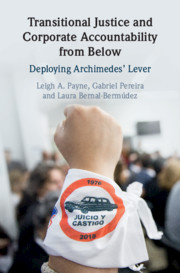Book contents
- Transitional Justice and Corporate Accountability from Below
- Transitional Justice and Corporate Accountability from Below
- Copyright page
- Contents
- Figures
- Tables
- Images
- Acknowledgments
- Introduction Transitional Justice and Corporate Accountability
- 1 Corporate Accountability from Below
- Part I Obstacles to Corporate Accountability
- Part II Accountability from Below
- Conclusion The Impact of Accountability from Below
- Appendices
- Bibliography
- Index
- References
Bibliography
Published online by Cambridge University Press: 10 April 2020
- Transitional Justice and Corporate Accountability from Below
- Transitional Justice and Corporate Accountability from Below
- Copyright page
- Contents
- Figures
- Tables
- Images
- Acknowledgments
- Introduction Transitional Justice and Corporate Accountability
- 1 Corporate Accountability from Below
- Part I Obstacles to Corporate Accountability
- Part II Accountability from Below
- Conclusion The Impact of Accountability from Below
- Appendices
- Bibliography
- Index
- References
Summary

- Type
- Chapter
- Information
- Transitional Justice and Corporate Accountability from BelowDeploying Archimedes' Lever, pp. 337 - 364Publisher: Cambridge University PressPrint publication year: 2020



